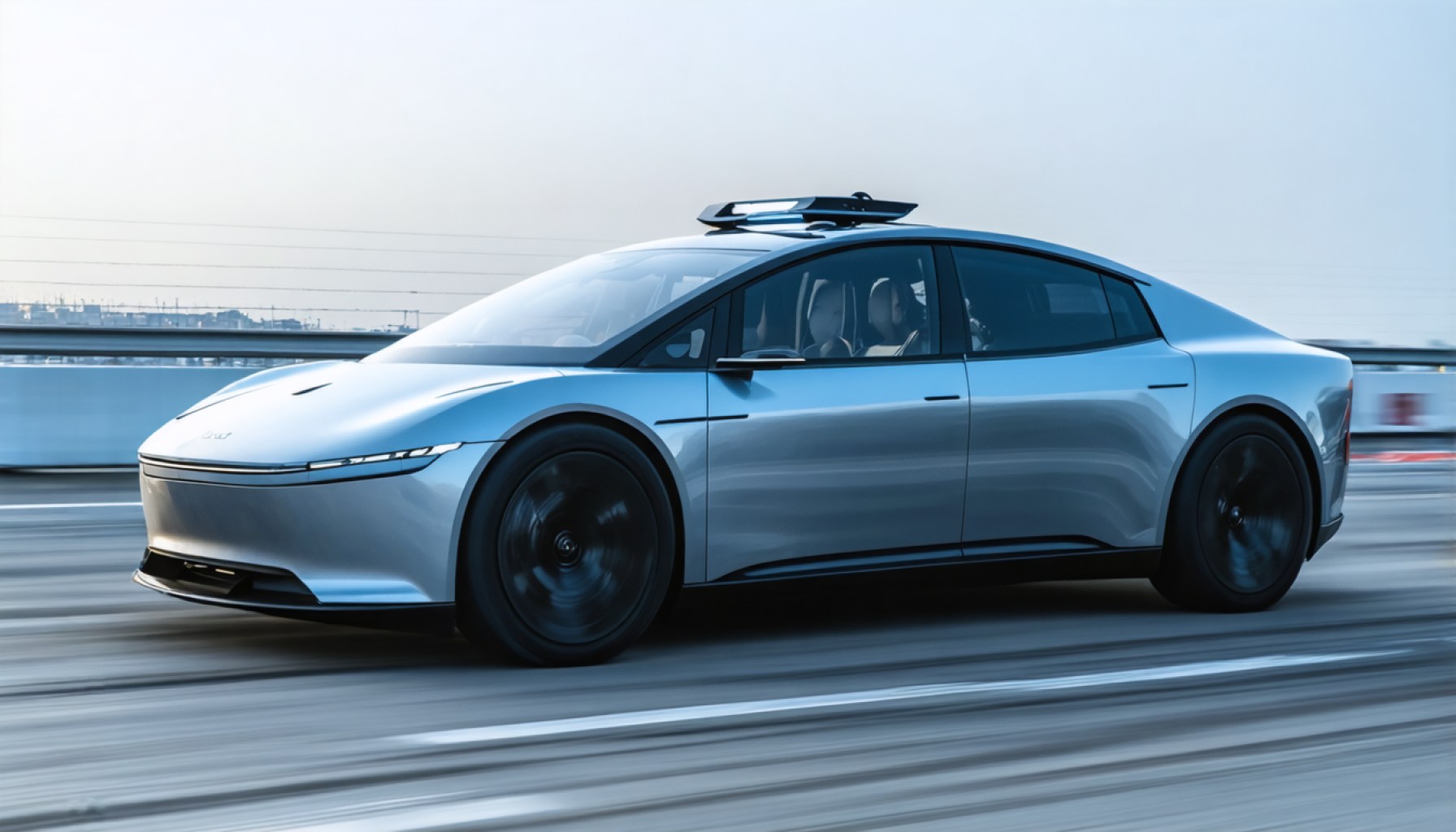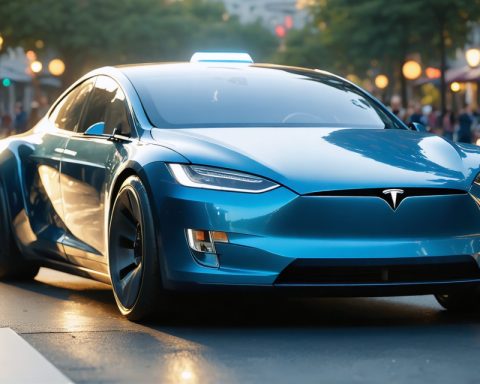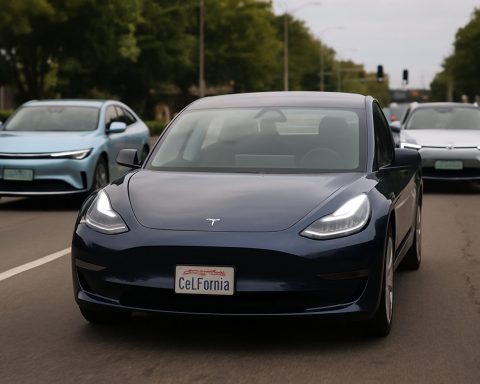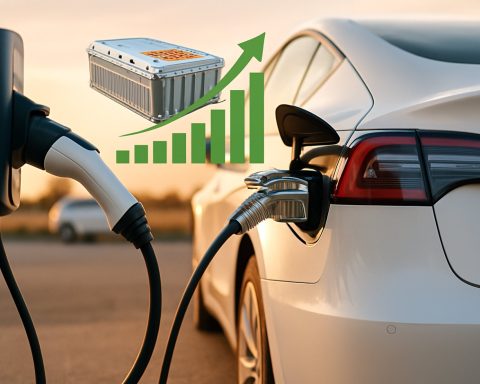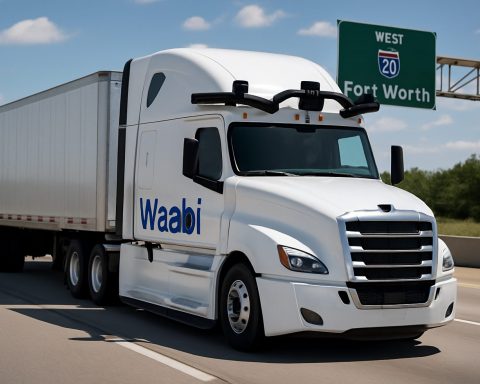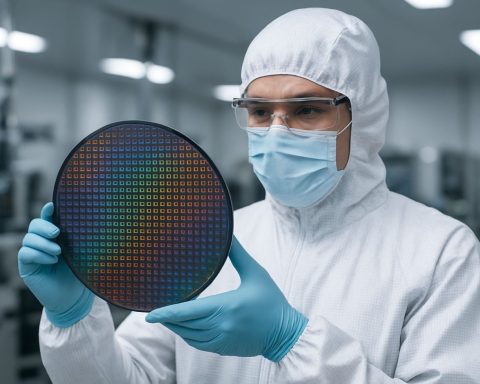- Uber collaborates with Momenta to expand autonomous vehicle offerings, targeting a 2026 rollout.
- This strategic alliance highlights a step towards global expansion, bypassing the US and China market hubs.
- Initial deployment will feature safety drivers, aiming for a shift in future urban traffic patterns.
- Momenta is supported by major investors like SAIC Motor, GM, Toyota, Mercedes-Benz, and Bosch.
- Uber’s partnerships include established names such as Waymo, Volkswagen, Nuro, and Serve.
- The collaboration underscores the pursuit of autonomous innovation and sustainable mobility.
A new chapter in the saga of self-driving ambitions has unfolded as Uber partners with Momenta, marking a significant step on the global stage of autonomous transportation. By 2026, Momenta’s fleet of cutting-edge vehicles will grace Uber’s platform, promising rides that blend technological prowess and strategic foresight. These vehicles will begin their journey with vigilant safety drivers, silently steering toward a future where the cityscape might experience a significant shift in traffic dynamics.
This alliance isn’t just a voyage into a futuristic mode of transportation; it highlights a potent partnership that transcends borders, spanning continents but sidestepping the crowded hubs of the United States and China. The exact destinations remain cloaked in mystery, inviting speculative whispers of diverse international locales eager to host this innovative collaboration.
Momenta, backed robustly by distinguished investors such as China’s SAIC Motor and international titans GM, Toyota, Mercedes-Benz, and Bosch, stands poised on a strong foundation. Each stakeholder brings a wealth of industry clout to the table, underlining the seriousness and viability of Momenta’s ambitious venture into autonomous driving.
Uber’s own robotic roster continues to expand, weaving a complex tapestry of alliances. While names like Waymo and Volkswagen headline its self-driving lineup, delivery stalwarts such as Nuro and Serve chart their courses for logistical marvels. This impressive consortium reflects Uber’s relentless pursuit of innovation, as it positions itself at the vanguard of the autonomous revolution.
The acceleration toward autonomy is more than just a technological pursuit; it encapsulates a profound vision of reinventing mobility itself. As cities evolve and populations burgeon, the promise of efficient, driverless transport emerges as both a necessity and an exciting possibility. The Uber-Momenta collaboration exemplifies not merely a technological advancement but a strategic alignment toward a sustainable, automated future.
As the countdown to 2026 progresses, our streets might soon play host to these sleek robots, rolling forth to redefine convenience. The lesson here is clear: the future waits for no one, and Uber, together with Momenta, invites us all to embrace a transformative journey where technology and transport converge seamlessly on roads less traveled.
The Silent Race to Autonomous Driving: How Uber and Momenta are Shaping Urban Mobility
The Uber-Momenta Partnership: A Glimpse Into the Future
Uber’s recent partnership with Momenta marks a pivotal move in the world of autonomous transportation. By 2026, Momenta’s state-of-the-art autonomous vehicles will join Uber’s platform, signaling a shift in how we perceive urban mobility. While this collaboration focuses on parts of the world outside the usual U.S. and China tech hubs, it promises to revolutionize global transportation networks.
Exploring the Innovations: What Sets Momenta Apart?
Momenta’s strength lies in its strong backing from industry leaders such as SAIC Motor, GM, Toyota, Mercedes-Benz, and Bosch. These partnerships not only bring financial support but also a wealth of technological expertise. Momenta’s approach merges cutting-edge artificial intelligence with robust vehicle design, ensuring that safety and efficiency are top priorities.
The Roadmap to 2026: How Autonomous Vehicles Will Transform Urban Landscapes
1. Initial Deployment with Safety Drivers: Momenta’s fleet will start operations with trained safety drivers, ensuring a smooth transition and addressing any unexpected challenges in real-world conditions.
2. Key Markets and Expansion: The partnership is strategically bypassing saturated markets like the U.S. and China, exploring opportunities in Europe, the Middle East, and other regions eager for cutting-edge solutions.
3. Economic and Environmental Benefits: Autonomous vehicles promise significant reductions in traffic congestion and emissions, presenting an opportunity for cities to become cleaner and more efficient.
Real-World Use Cases and Advantages
– Enhanced Ride-Hailing Experience: The integration of Momenta’s technology can potentially decrease wait times and optimize driving routes, improving user satisfaction.
– Reduced Operational Costs: Autonomous vehicles reduce the need for human drivers, offering a cost-effective solution for transport companies.
– Safety and Reliability: The use of real-time data and AI-driven insights improve vehicle safety and performance.
Industry Trends and Future Predictions
The global autonomous vehicle market is projected to grow exponentially, with industry leaders forecasting a strong presence by the early 2030s. Key trends include:
– Increased Investment in AI and Machine Learning: This will enhance vehicle capabilities, including navigation and decision-making processes.
– Collaboration Across Industries: Partnerships between automotive, tech, and logistics companies are expected to drive innovation.
– Regulatory Developments: Governments worldwide are likely to update policies to accommodate autonomous technologies.
Potential Limitations and Challenges
– Regulatory Hurdles: Different countries have varying laws regarding autonomous driving, which could slow down global implementation.
– Public Skepticism: Trust in automated technology remains a hurdle, necessitating robust safety standards and transparency.
– Infrastructure Requirements: Successful deployment of autonomous vehicles will require significant upgrades to existing urban infrastructure.
Actionable Tips for Embracing Autonomous Technology
– Stay Informed: Follow industry news to understand the latest advancements in autonomous vehicle technology.
– Consider Integration: Businesses should explore integrating autonomous fleets to cut costs and improve efficiency.
– Advocate for Policy Change: Support legislative efforts conducive to autonomous vehicle adoption in your community.
For more insights into the future of transportation, visit Uber and Momenta.
As we approach a new era in transportation, the Uber-Momenta collaboration offers a promising outlook on how technology will reshape the highways and byways of our world. Embrace the change and prepare for a future where mobility is both autonomous and sustainable.
